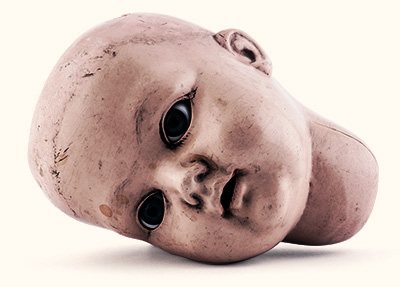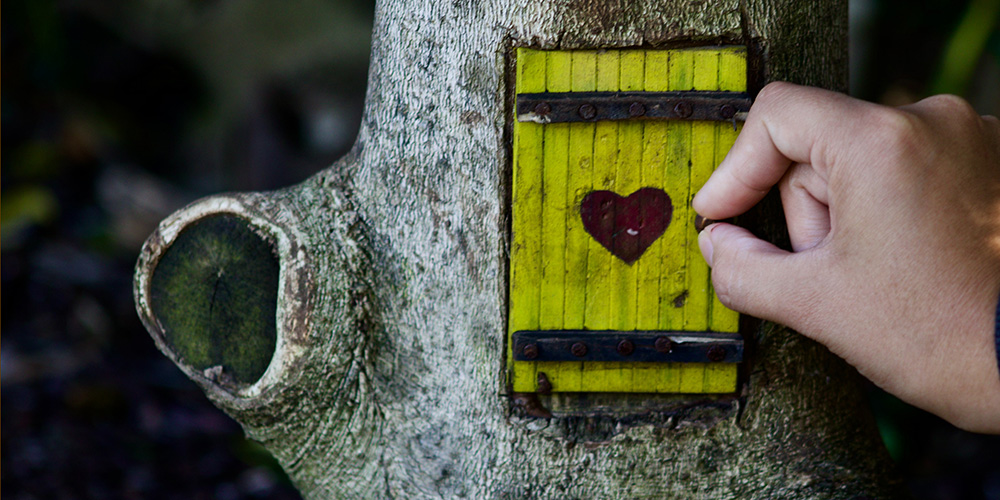Trolls are a paranormal/pop-culture crossover phenomenon. Every American knows the word “troll” from childhood. But do we actually understand what real trolls are? Trolls hail from Scandinavian folklore, and their rise to pop-culture fame was paved by a toymaker in Denmark, but there is one place where the creatures from the stories may still intertwine with the real world: Iceland.
Troll Dolls
When we were growing up, trolls were a doll. A hideous, naked*, oddly-toned doll with a shock of brightly colored, gravity-defying hair before brightly colored hair was really a mainstream thing. We all knew they were hideous. But every kid had to have one. Or, really, like 20 (or 8000, for the most ambitious among us). Even though all troll dolls looked the same. My personal collection culminated in one enormous troll doll, large enough to eat all the other dolls, yet identical in every way except for size and hair color. Kids will crave the stupidest crap if the marketing is good enough. But in this case, It truly was our parents’ fault.
Our generation’s troll dolls were an echo of the troll doll craze of the 1960’s. Our Boomer parents were nostalgic to share a childhood memory with their kids. The dolls’ psychedelic hair colors may well have been how the preference for a neon palette leaked from late ’60s fashion to the late 80’s.
*when I got my dolls, troll clothing was an upsell deemed not strictly necessary in my frugal family. By the time my box of toys went to Goodwill, I had collected a couple troll-sized Hawaiian shirts.
Trolls Movie Franchise
And the cycle continues. GenZ mainly associates trolls with the film franchise; the first American trolls franchise that was actually legally licensed from the original Danish creator. The Trolls in the Dreamworks movies were based on the dolls from our youth. They do have much more personality, backstory, and (thank you, God) clothing is no longer “optional.” They also have a rainbow of skin tones, including glitter.
Internet Trolls
And now for something completely different. The one type of trolls that spans between GenX and GenZ are, of course, internet trolls. These trolls did not evolve from the creatures of Scandinavian folklore. They are named for their behavior.
According to Urban Dictionary, the term “trolling” is a fishing term for dragging enticing bait behind a slow moving boat to lure and trap unsuspecting fish. Internet trolls use a similar bait-and-trap technique: making unsolicited controversial comments that are highly likely to provoke arguments. Fun fact: The reason we do our live shows on Fireside is because they have a rigorous troll-screening process.
People talk about how trolls are ruining the internet, but some experts believe it’s the internet ruining the way humans interact in general. Our inability to see them face-to-face is part of why internet trolls feel free to take their aggressions out on strangers. those foolish enough to express their opinion online and expect an exclusively positive response. This may be the main thing internet trolls have in common with real trolls: we can’t really see them, we mainly feel the energy of their presence.
Icelandic Trolls
Our recent guest, Alma, has a very different take on trolls. Her different viewpoint stems less from generational trends, and more from the deep history of her culture and family. To Alma, trolls aren’t just characters from cartoons. Trolls are real.
What do trolls look like in real life?
Last year, my dad visited Iceland. While he was there, he sent me the following email from his B&B.
“Before we arrived, the owner of the home told us to make an offering to the trolls so that our stay would not fall upon misfortune. Outside of his front porch, he has constructed a small dwelling that trolls can use in the dark, when they are above ground and out and about. Last night, we offered a slice of bread and this morning we witnessed what was left behind.”

“The fact that they ate part of the bread is proof that they were here, and we hope that they are satisfied and will not harm us during our stay.”
Wait, aren’t trolls huge?
This Icelander’s tiny troll houses are pretty incongruous with Alma’s description of trolls as almost 10 feet tall. I can picture the enormous troll looking down at the house, much like my giant troll doll looked down at all my tiny troll dolls, and shaking his head.
Our guest Alma brought up a very good point when she explained that, like elves, elementals, fairies, unicorns, dragons, and other “fantasy” creatures, trolls exist physically outside of our dimension. Alma is in the minority of Icelanders who actually interact with trolls. Most human adults from our dimension can only sense their energy, not interact with them the way we’d interact with banal hornless-horses or boring bearded dragons.
Asking what real trolls look like is like asking what your aura looks like. You are not at all likely to just spot a troll strolling through the woods. If you want to learn how to see a real troll, you’re going to have to focus on channeling its energy with your “third eye” so to speak. Focus first on feeling, rather than seeing. Trolls feel earthy. They feel large. They may feel intimidating. Once you can sense them, then you can work on channeling what they look like.
Oh, and you might need to travel.
Are trolls real in Iceland only?
Alma has felt troll energy in other countries, sure, but not everywhere. Recent films might lead one to wonder, are there real trolls in Norway, Denmark, and other Scandinavian cultures? At some point in history, all of these regions had stories of trolls in their folk tales. Yet despite being pretty ubiquitous in Scandinavian folklore, trolls seem to have a special affinity for Iceland nowadays. What is it about Iceland that allows trolls to persist into the modern era?

Weather
While the average winter temperatures aren’t anywhere near as cold as other northern places, Icelanders do spend some winter evenings barricaded indoors, sheltering from highly unpredictable snow storms that would make any extreme winter sportsman’s toes curl. In a blinding snow storm, it would be absolutely conceivable to look out the window and not see the huge troll trudging through your yard. Any troll footprints would’ve been covered with fresh snow by morning, which isn’t coming as soon as you might think.
Light
Iceland is so far north that there are days where the sun makes a brief how-do-ya-do over the horizon only to set before it truly rises. There’s also something surreal about 4 hour days in the winter, and midnight sunshine in the summer. The stories tell that trolls can only roam in darkness. Sunlight will turn a troll to stone, or so we infer from the troll-shaped rocks left behind. Is it possible that trolls once roamed the entire globe, but their numbers have seriously dwindled in sunny areas outside of Iceland where they’re more likely to turn to stone?

Geography
What’s more mystical than deadly hot magma erupting from a volcano? Iceland has more volcanoes than any other country. Partly because of volcanoes and glaciers, there’s a lot of land in Iceland that humans just never tread on. If trolls want to hide from humans, they have plenty of places to do so in Iceland.

Isolation
Iceland is an island. It is one of the most remote large nations on earth. It’s certainly the most remote country within its continent. As such, influence from other cultures came later than it did for European countries that are connected by land. We like to imagine that by the time Iceland heard the news that other Scandinavian cultures had stopped believing in trolls, they had too much evidence of their existence to go along with the trends.
Fewer humans
The human population of Iceland is very small, compared to its land mass. At the time of this writing, Iceland is the least populated country in Europe. The total population of Iceland has never come close to half a million people. The current population density of Iceland in 2022 is 8.68 people per square mile. For reference, the average population density of the US is ten times higher, at 88.19 people per square mile. And we can drive across the US for literally 53 straight hours, witnessing that only a small fraction of our land is inhabited.
Even less of Iceland is inhabited, since there’s a decent chunk of the country made of glaciers, volcanoes, and lava floes. Plus, the inland part of Iceland is mostly wild pasture, unreachable by major roads. With so few humans about, it just makes sense that the creatures the Vikings used to tell stories about wouldn’t feel as displaced as they do in more populated nations.
A long time ago, many Icelandic people lived in isolation even within Iceland, with miles between farms and weather that sometimes cut off human contact for days. Without the energy of other humans around constantly, these early people were likely more sensitive to the energies of nature, and the energies bleeding through from other realms.
Do trolls eat humans?
Trolls have a heavy, earthy, timeless, and powerful energy. Couple this with their 3 meter height and that they only come out at night, and you have an energy that’s pretty intimidating to your average human.
When we interviewed Alma, Becky asked her “are bridge trolls real”? You know, thinking of the one that intimidated the hell outta those poor billygoats. They just wanted to munch some fresh grass. It’s easy to imagine a young, inexperienced troll accidentally staying out past curfew, taking refuge under a shady bridge so as not to turn to stone. But this exact event is improbable. Specifically because there were probably no humans to put them there. Remember how trolls exist in an alternate dimension from ours? The bridges and structures humans have built here may not exist in their dimension. Or…they might. That is, if they share a dimension with elves and the hidden folk, who may well have used similar logic to place their constructions.

Trolls’ reputation for extracting bridge tolls and eating humans probably stems from a combination of sensing these huge, strong energies, but not being able to actually see them. It’s human nature to make mysterious things into scary things, isn’t it? What happens when you tell enough generations of kids “if you don’t behave, the trolls will eat you”? Eventually they get a bad rep.
So, are trolls real in real life?
Trolls are real in the sense that energy is real. The energy of the earth and the darkness can feel intimidating to us puny humans. Learning to be still within that discomfort and allowing those energies to reach out and make contact may or may not lead to interacting with trolls. There are many things in the universe that we can’t see with our eyes. But learning to feel and connect with these energies connects us with our ancestors—isolated, without the internet, telephones, even electricity—on those cold, dark winter nights that let the mind embellish the ordinary and perceive the extraordinary. Kind of in the way parents have connected with their kids through pop-culture trolls for 3 generations now. But unlike collecting bits of trendy plastic, embracing the energies of wild places connects us with nature, our planet, and the vastness of possibility that is our universe. And it is connection with people and nature that just might save us from becoming trolls ourselves.


